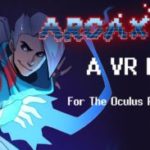How immersive technology is changing education for the better.
VR and AR are far from new educational technologies. However, the process of their adaptation is rather slow, since the clumsy bureaucratic machines of schools and universities are not able to adapt to changes quickly. Nevertheless, the prospects for using VR and AR in education are huge, and expert predictions are quite optimistic. What is more, the recent pandemic has significantly accelerated the development and adaptation of technologies in the educational process. So, let’s discuss the five main use cases of AR and VR in modern education.
SIMULATE RISKY SITUATIONS
The ability to stimulate risky but necessary jobs and situations is one of the key advantages of VR and AR for the educational sector. At the same time, this is one of the most common use cases.
For example, during the training of police officers, it is possible to simulate situations of pursuit, detention, and interrogation while teaching students the best legal practices, quick and correct reactions, and respect for human rights at the same time. For example, the TuServe application may be used for future police officers’ education and everyday work by allowing departments to simulate real-world scenarios. The same technology could be applied to a range of other professions, including firefighting and various rescue services.

HONE THE SKILLS
This use case is the logical continuation of the previous one. By simulating various situations without risk to health, students have a unique opportunity to hone their professional skills in a realistic environment.
For example, medical students can take part in virtual surgeries and improve their surgical skills through trial and error using the Touch Surgery application. Previously, they were forced to either observe the actions of professional doctors or use the bodies of the deceased for practice, which can hardly be called an ethical approach.
VR and AR solves these problems by offering students the chance to balance theory and practice in a safe and cost-effective manner.
VISUALIZE THE CONCEPTS AND PROVOKE EMOTIONS
The first impression that our brain receives is always visual. So, it makes sense to enhance the potential of visual perception for the educational process.
For example, if we continue talking about medical students, then in their cases a high-quality visual 3D model of the human body can significantly help students study the location of organs, study the organs themselves in the smallest detail, remember the location and names of the bones of the human body, and so on. In this case, the visualization that students can explore, twist, “try” and experiment with is a much better alternative to a traditional paper textbook or a display of corpses in a morgue.

Demonstration and visualization capabilities are not limited to the field of education of medical students only. For example, history students can visit a simulated Ancient Rome, feel the atmosphere as close to the ancient as possible, and experience these emotions. Google Expeditions is one of the solutions that may be used for this purpose.
Why are emotions important in this context? As a rule, when a certain event or situation evokes strong emotions in us, we pay attention to the little things and details that are remembered for a very long time. And this is exactly what we strive for in the learning process.
EXPAND THE BOUNDARIES OF DISTANCE LEARNING
The boundaries of distance learning have already expanded significantly thanks to the pandemic. More and more students around the world are convinced of the effectiveness and feasibility of online education.
For example, these technologies allow the creation of virtual classrooms, and students and teachers can teleport their projections into these spaces. Thus, lectures by leading professors from Harvard and Yale can become available to any student who has virtual reality glasses and a corresponding application on their mobile phone. To date, Microsoft is successfully working on such a holoportation solution.
Plus, such virtual courses are an additional opportunity for earning money, because the possibilities for monetizing a training course within virtual reality are almost endless.

RECRUIT STUDENTS MORE EFFICIENTLY
The student recruiting process can also be improved and simplified using VR. For example, students can walk around the campus in virtual mode, open the doors of classrooms and bedrooms, and visually assess the atmosphere of the university to see if they will feel comfortable and productive.
Of course, this is a great alternative to personal visits that are time-consuming. Plus, this is another way to reduce the number of personal contacts unless absolutely necessary.
Moreover, this approach has already been implemented by leading American universities, and targeted campus attendance during the recruiting campaign period has increased significantly.
CONCLUSION
In fact, the opportunities for using VR and AR in education are not limited to the five cases that we described above. Of course, education systems will have to overcome a number of difficulties – for example, creating quality content for VR and AR apps, purchasing the necessary equipment, and making appropriate changes to the curriculum. It will be a long and costly process, but in this case, the advantages far outweigh the disadvantages.
The post Five Ways VR Can Be Used In Modern Education appeared first on VRScout.




